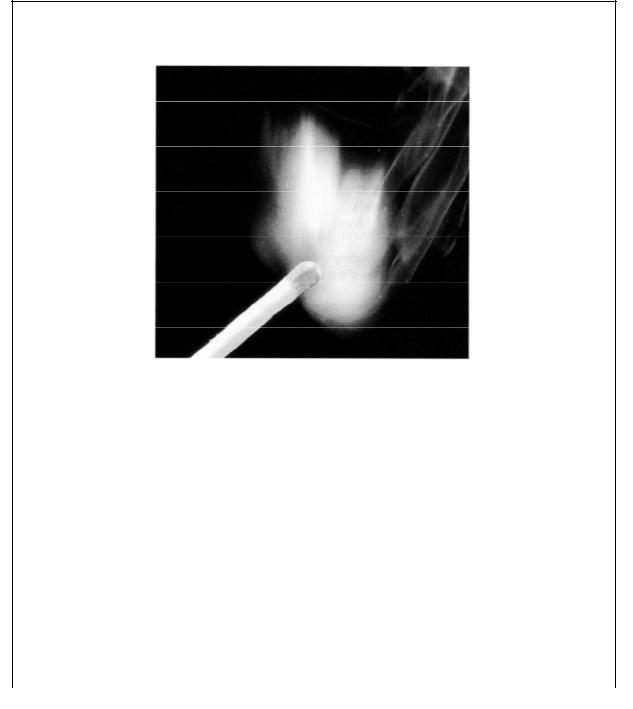
IELTS_
.pdfListening
Questions 14-21
Complete the notes below by writing NO MORE THAN THREE WORDS in the spaces provided.
................................................The Government plans to give (14) $ |
to assist the |
farmers. This money was to be spent on improving Sydney’s |
|
(15) ........................................................................ |
but has now been re-allocated. |
Australia has experienced its worst drought in over fifty years. |
|
Farmers say that the money will not help them because it is |
|
(16) ............................................................. . |
|
|
|
|
|
An aeroplane which was carrying a group of (17) .................................................. |
|
was forced to land just (18) ................................................. |
minutes after take-off. |
The passengers were rescued by (19) ............................................................ |
. The |
operation was helped because of the good weather. The passengers |
|
thanked the (20) ............................................................... |
for saving their lives but |
unfortunately they lost their (21) .................................................................. |
. |
|
|

Practice Test 1
SECTION 3 Questions 22-31
Questions 22-25
Circle the appropriate letter.
Example
The student is looking for the School of
AFine Arts.
BEconomic History.
CEconomics.
DAccountancy.
22The orientation meeting
A took place recently. B took place last term.
C will take place tomorrow. D will take place next week.
23Attendance at lectures is
A optional after 4 pm. B closely monitored. C difficult to enforce.
D sometimes unnecessary.
24Tutorials take place
A every morning. B twice a week.
C three mornings a week. D three afternoons a week.
25The lecturer’s name is
ARoberts.
BRawson.
CRogers.
DRobertson.
16

Listening
Questions 26-31
Complete the notes below using NO MORE THAN THREE WORDS.
Course requirements:
Tutorial paper:
•A piece of work ON A given topic. Students must:
• (26) .......................................................... |
for 25 minutes |
•(27) .........................................................
•give to lecturer for marking
Essay topic:
Usually (28) ........................................................................
Type of exam:
(29) .........................................................................................
Library:
Important books are in (30) ............................................. .
Focus of course:
Focus on (31) ........................................................................ .

Practice Test 1
SECTION 4 Questions 32-41
Questions 32-33
Circle the appropriate letter.
32The speaker works within the Faculty of
A Science and Technology.
BArts and Social Sciences.
CArchitecture.
DLaw.
33 The Faculty consists firstly of
Asubjects.
Bdegrees.
Cdivisions.
Ddepartments.
Questions 34-36
Complete the notes m NO MORE THAN THREE WORDS.
The subjects taken in the first semester in this course are psychology, sociology,
(34)................…………………………. and
.…….....................………………. .
Students may have problems with
(35)................…………………………. and
(36)………………..................………. .
18
Reading
Questions 37-41
Circle the appropriate letter.
37The speaker says students can visit her
A every morning. B some mornings. C mornings only.
D Friday morning.
38According to the speaker, a tutorial
Ais a type of lecture.
Bis less important than a lecture.
Cprovides a chance to share views.
Dprovides an alternative to groupwork.
39When writing essays, the speaker advises the students to
A research their work well.
B name the books they have read. C share work with their friends. D avoid using other writers’ ideas.
40The speaker thinks that plagiarism is
A a common problem. B an acceptable risk. C a minor concern.
D a serious offence.
41The speaker’s aims are to
A introduce students to university expectations. B introduce students to the members of staff.
C warn students about the difficulties of studying. D guide students round the university.

Practice Test 1
READING PASSAGE 1
You should spend about 20 minutes on Questions 1-15 which are based on Reading
Passage 1 below
A spark, a flint: How fire leapt to life
The control of fire was the first and perhaps greatest of humanity’s steps towards a l i f e - e n h a n c i n g technology
To early man, fire was a divine gift randomly delivered in the form of lightning, forest fire or burning lava. Unable to make flame for themselves, the earliest peoples probabh stored fire
by keeping slow burning logs alight or by carrying charcoal in pots.
How and where man learnt how to produce flame at will is unknown. It was probably a secondary invention, accidentally made during tool-making operations with wood or stone. Studies of primitive societies suggest that the earliest method of making fire was through friction. European peasants would insert a wooden drill in a round hole and rotate it briskly between their palms This process could be speeded up by wrapping a cord around the drill and pulling on each end.
The Ancient Greeks used lenses or concave mirrors to concentrate the sun’s rays and burning
glasses were also used by Mexican Aztecs and the Chinese.
P e r c u s s i o n methods of firelighting date back to Paleolithic times, when some Stone Age tool-makers discovered that chipping flints produced sparks. The technique became more efficient after the discovery of iron, about 5000 vears
ago In Arctic North America, the Eskimos produced a slow-burning spark by striking quartz against iron pyrites, a compound that contains sulphur. The Chinese lit their fires by striking porcelain with bamboo. In Europe, the combination of steel, flint and tinder remained the main method of firelighting until the mid 19th century.
Fire-lighting was revolutionised by the discovery of phosphorus, isolated in 1669 by a German alchemist trying to transmute silver into gold. Impressed by the element’s combustibility, several 17th century chemists used it to manufacture fire-lighting devices, but the results were dangerously inflammable. With phosphorus costing the
20

Reading
eqimalent of several hundred pounds per ounce, the hrst matches were expensive.
The quest for a practical match really began after 1781 when a group of French chemists came up with the Phosphoric Candle or
Ethereal Match, a sealed glass tube containing a twist of paper tipped with phosphorus. When the tube was broken, air rushed in, causing the phosphorus to selfcombust. An even more hazardous device, popular in America, was the Instantaneous Light Box — a bottle filled with sulphuric acid into which splints treated with chemicals were dipped.
The first matches resembling those used today were made in 1827 by John Walker, an English pharmacist who borrowed the formula from a military rocket-maker called Congreve. Costing a shilling a box, Congreves were splints coated with sulphur and tipped with potassium chlorate. To light them, the user drew them quickly through folded glass paper.
Walker never patented his invention, and three years later it was copied by a Samuel Jones, who marketed his product as Lucifers. About the same time, a French chemistry student called Charles Sauria produced the first “strike-anywhere” match by substituting white phosphorus for the potassium chlorate in the Walker formula. However, since white phosphorus is a deadly poison, from 1845 match-makers exposed to its fumes succumbed to necrosis, a disease that eats away jaw-bones. It wasn’t until 1906 that the substance was eventually banned.
That was 62 years after a Swedish chemist called Pasch had discovered non-toxic red or amorphous phosphorus, a development exploited commercially by Pasch’s compatriot J E Lundstrom in 1885. Lundstrom’s safety matches were safe because the red phosphorus was non-toxic; it was painted on to the striking surface instead of the match tip, which contained potassium chlorate with a relatively high ignition temperature of 182 degrees centigrade.
America lagged behind Europe in match technology and safety standards. It wasn’t until 1900 that the Diamond Match Company bought a French patent for safety matches — but the formula did not work properly in the different climatic conditions prevailing in America and it was another 11 years before scientists finally adapted the French patent for the US.
The Americans, however, can claim several “firsts” in match technology and marketing. In 1892 the Diamond Match Company pioneered book matches. The innovation didn’t catch on until after 1896, when a brewery had the novel idea of advertising its product in match books. Today book matches are the most widely used type in the US, with 90 percent handed out free by hotels, restaurants and others.
Other American innovations include an antiafterglow solution to prevent the match from smouldering after it has been blown out; and the waterproof match, which lights after eight hours in water.

Practice Test 1
Questions 1-8
Complete the summary below. Choose your answers from the box at the bottom of the page and write them in boxes 1 8 on your answer sheet.
NB There are more words than spaces so you will not use them all You may use any of the words more than once.
EARLY FIRE-LIGHTING METHODS
Primitive societies saw fire as a ... (Example) ... gift. Answer heavenly
They tried to ... (1) ... burning logs or charcoal ... (2) ... that they could create fire themselves. It is suspected that the first man-made flames were produced by ... (3) ...
The very first fire-lighting methods involved the creation of ... (4) ... by, for
example, rapidly ... (5) ... a wooden stick in a round hole. The use of ... (6) ...
or persistent chipping was also widespread in Europe and among other peoples such as the Chinese and ... (7) ... . European practice of this method continued until the 1850s ... (8) ... the discovery of phosphorus some years earlier.
|
List of Words |
|
Mexicans |
random |
rotating |
despite |
preserve |
realising |
sunlight |
lacking |
heavenly |
percussion |
chance |
friction |
unaware |
without |
make |
heating |
Eskimos |
surprised |
until |
smoke |
|
|
|
|
22

Rreading
Questions 9-15
Look at the following notes that have been made about the matches described in Reading Passage 1. Decide which type of match (A-H) corresponds with each description and write your answers in boxes 9 15 on your answer sheet.
NB There are more matches than descriptions so you will not use them all. You may use any match more than once.
Example |
Answer |
could be lit after soaking in water |
H |
|
|
NOTES
9made using a less poisonous type of phosphorus
10identical to a previous type of match
11caused a deadly illness
12first to look like modern matches
13first matches used for advertising
14relied on an airtight glass container
15made with the help of an army design
Types of Matches
Athe Ethereal Match
Bthe Instantaneous Lightbox
CCongreves
DLucifers
Ethe first strike-anywhere match
FLundstrom’s safety match
Gbook matches
Hwaterproof matches

Practice Test 1
READING PASSAGE 2
You should spend about 20 minutes on Questions 16-28 which are based on Reading Passage 2 below.
Zoo conservation programmes
One of London Zoo’s recent advertisements caused me some irritation, so patently did it distort reality. Headlined “Without zoos you might as well tell these animals to get stuffed”, it was bordered with illustrations of several endangered species and went on to extol the myth that without zoos like London Zoo these animals “will almost certainly disappear forever”. With the zoo world’s rather mediocre record on conservation, one might be forgiven for being slightly sceptical about such an advertisement.
Zoos were originally created as places of entertainment, and their suggested involvement with conservation didn’t seriously arise until about 30 years ago, when the Zoological Society of London held the first formal international meeting on the subject. Eight years later, a series of world conferences took place, entitled “The Breeding of Endangered Species”, and from this point onwards conservation became the zoo community’s buzzword. This commitment has now been clearh defined in The World Zpo Conservation Strategy (WZGS, September 1993), which although an important and welcome document does seem to be based on an unrealistic optimism about the nature of the zoo industry
The WZCS estimates that there are about 10,000 zoos in the world, of which around 1,000 represent a core of quality collections capable of participating in co-ordinated conservation programmes. This is probably the document’s first failing, as I believe that 10,000 is a serious underestimate of the total number of places masquerading as zoological establishments. Of course it is difficult to get accurate data but, to put the issue into perspective, I have found that, in a year of working in Eastern Europe, I discover fresh zoos on almost a weekly basis.
The second flaw in the reasoning of the WZCS document is the naive faith it places in its 1,000 core zoos. One would assume that the calibre of these institutions would have been carefully examined, but it appears that the criterion for inclusion on this select list might merely be that the zoo is a member of a zoo federation or association. This might be a good starting point, working on the premise that members must meet certain standards, but again the facts don’t support the theory. The greatly respected American Association of Zoological Parks and Aquariums (AAZPA) has had extremely dubious members, and in the UK the Federation of Zoological Gardens of Great Britain and Ireland has
24
